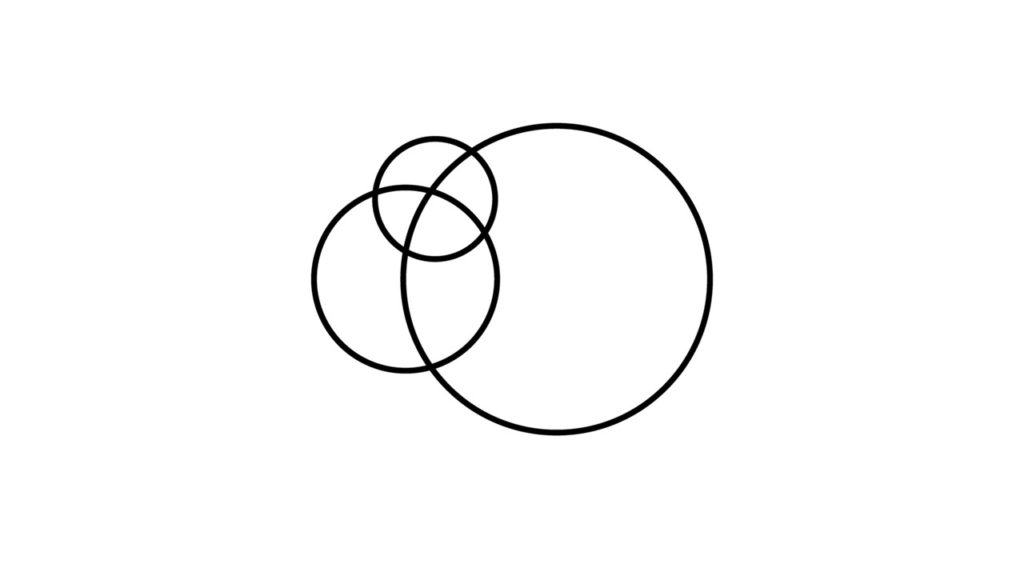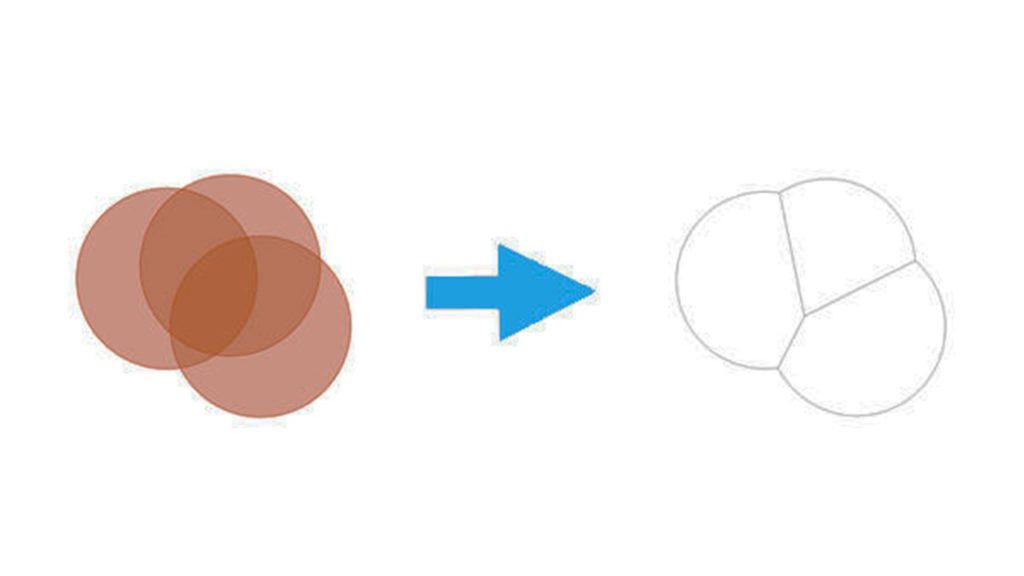From Event: LONGTRUK Grant for Art 2020
Kengkij Kitirianglarp
Translated Thai to English by Polwach Beokhaimook

Questions about “the world” and “humans” are typical; not unlike what anthropologist Tim Ingold[1] asks whether humans are “inside” or “outside” the world. If humans are inside the world, how do we perceive the world as a holistic matter? Connotationally, how can the world be a space with a circular shape? If humans are outside the world, how can the aforesaid world mean a place or a space where humans live inside? Questions go on and on. Undeniably, these questions are based on metaphysical methods of thinking which serves humans as beings that exist through materiality as the world exists as if it was the only thing, or “the only world,” etc. Obviously, these methods of thinking act as fundamentals to think about our and other people’s ego and identities.

It can be seen that debates on “the world” are important issues, especially among philosophers and anthropologists, in the academic area in the 21st century. These debates can be categorized into 2 degrees of questions. The first degree consists of debates on the existence of the world. Does the world exist? If it exists, how does it look like? Does it include or exclude anything? Etc. The second degree consists of debates on whether there is only one world or there are many worlds. Briefly, among the contemporary debates, Markus Gabriel[2] states that “the world does not exist,” according to him, if the world existed, everything else would not exist because the existence of everything else would merely be existing things or confirmed/supported by the only one world existence. Anthropologists Phillipe Descola[3] and Eduardo Viveiros de Castro[4] state that coming up with thoughts about the world is essential, according to them, the world didn’t exist formerly, but it was the beings who created the world (worlding) among the way they lived their lives. Anthropologist João de Pina-Cabral[5] states that the world had to exist before the beings, if without the realization or being within the world, the beings would not exist and would not cogitate on their and things’ existence. More than that, in these days, there are also several debates on the interaction between the world and the earth. These debates indicate that we can’t distinguish between the world and the earth anymore, especially in the midst of the crisis of the ecosystem[6]. After the publication of Earth Beings (2015) by Marisol de la Cardena[7], debates on the world have become crucial again as part of the revival of study of ontology among anthropologists.

In the book A World of Many Worlds (2018), Marilyn Strathern comes up with a hypothesis, or a basic equation, about “many worlds” or the pluriverse[8] which directly challenges the philosophical method of thinking about “one world” or universe, where unus means “one.” In the scope of Western philosophy, there is only one world in the manner that there is only one truth in the world where the truth has its core and its apparent boundary, no matter if the truth is perceivable, unperceivable, or partially perceivable. He indicates that the method of thinking about one world or one truth is the base of what is called “knowledge” where, connotatively, knowledge means tools for accessing the truth, and the truth is loaded with perceivable things. Knowledge, in this aspect, can thus be seen from the object, where the object is the known, and can be seen from the subject, as knowledge is the means of accessing the truth in the one world. It is the concept about one world that is the condition for the duality between the subject and the object. There is only one truth within the object, but the knowledge that the subject uses to see the object can be various. This variety of how the subject sees the object transforms knowledge into “viewpoints” and epistemology where there are differences consistent with the viewpoints and the tools for accessing the truth. This is why the Western world is interested in the debates on epistemology or the way to find the knowledge. Without the method of thinking about one world, debates or discussions on the ways to find knowledge can’t therefore exist. In short, under this method of thinking, we have to assume the object to be still and that there is only one object, to make the ways to find knowledge hold different visions.

However, ontology-based anthropologists conversely state that “there are many worlds.” This is where the rethinking about the status of knowledge begins. If there are many worlds, the knowledge or the concept in each world can’t be compared with the knowledge or the concepts in the other worlds which are different, since the knowledge in each world has its own domain which makes its things reasonable within itself. In this aspect, knowledge is singularity, rather than particularity, and means fragments of truth. In this way, if there are many worlds, there are therefore many sets of knowledge, and each set has its own value and life which can’t be reduced to comparisons with the knowledge in the other worlds in the manner of judging which is right or wrong, and good or bad.
In this way, the subject and the object are not separate like what happens in the Western world regarding the duality. Rather, the subject and the object create each other specifically in their own ways. This means that we don’t separate ontology from epistemology, where ontology acts as the only truth in the worlds and epistemology acts as different visions toward the world, but rather the cause is how there are many worlds, and each world has its own truth that exists within its own domain.

Nevertheless, although each world exists and has its own domain, each of them doesn’t exist without relations with the other worlds[9], more accurately, each of them is partially related to the other worlds. This is what Strathern calls partial connection[10]. In Donna Haraway’s[11] words, being related to the other worlds is creation or formation of beings rather than that beings come after the existence of each world. To say more precisely, there was neither world nor being which lived before the relations with the other worlds. To put more simply, there is no existence of a world that exists alone without relations to the other worlds. Although we have many different worlds, the difference or ontology of each world is always resulted from the interactions or contacts of that world with the other worlds. In this way, the interactions or contacts between each world contribute to world restitution, accompanied by how beings are things that form themselves on the “edges” of many worlds that converge each other.

How each world exists with its own domain of knowledge makes knowledge transfers impossible on a conceptual scale, but relations between knowledge in different domains are, on the other hand, knowledge exchanges, where each set of knowledge or each world converges each other in the manner of divergence, especially at the edges of the convergence, where exchanges are formed while there are still differences. These edges of the convergence make knowledge non-holistic; not set by the core of the world, but rather dependent upon many worlds, or at least, two worlds at the same time where the knowledge can’t be reduced to what belongs to any one world. The convergence is the initial state of what is called pluriversal politics[12] which means worlds and beings that are formed by the convergence of several universes.

Since knowledge differences are resulted from differences between worlds, the knowledge differences can’t thus be seen as differences between different kinds of epistemology, but rather as differences of various beings. The edge of the worlds where various beings converge makes the beings different, and at the same time they are chained together in the manner that each specific being is dependent on many worlds simultaneously. For instance, the system of kinship in anthropology which indicates the difference between the statuses of a brother-in-law and a brother (being in brotherhood). Normally, someone considered a brother must be in the same world or the same family as his brother’s. Therefore, brother must be resulted from the same place, or at least, under the same set of rules that make both brothers to each other. But a brother-in-law has a different status; he is dependent upon two families or different groups of kinship, but those two are connected. When a person becomes a brother-in-law, he would be dependent upon at least two groups of kinship at the same time. We can’t completely specify which world or group of kinship he is exactly in, but he stays at the edges of two groups of kinship that converge each other. Consequently, a brother-in-law’s status is not a transfer from one group to another, but instead, an exchange. This makes him stand on two worlds simultaneously, rather than hold a status as an absolute individual with a boundary within himself. A brother-in-law therefore holds a state that is between two things. The status reforms on the convergence between worlds. This makes the existence of being a brother-in-law unable to be reduced to completely be a part of a world. Rather, the status is a state of existential indeterminacy which means a state of the unknowing, in accordance with Marshall Sahlins’s[13] statement: kinship is “mutuality of beings” where a being is not absolute within itself.

If we begin at the edges which are the convergence as the beginnings of things. These edges are thus not in a state of negation where otherness is pushed away, but rather, they are the beginnings which lead to extensions, creation, and becoming of various beings. A non-negation state that depends on many worlds all at once thus means that it is generation which connects many worlds together in the manner that it is irreducible to merely a world, at the same time, the differences of many worlds are able to build unity. This paradox, with one side is creation of differences and the other side is connection, makes many worlds form relations where these relations can’t be reduced to those conforming to norms or sets of interactions normally. Strathern calls them non-relational relations[14] which mean relations where one side of them can’t be dissolved or reduced to one that depend on the other side or the totality of relations. However, the relation duo still maintain itself, and concurrently, a portion of each side is also part of another.

If beings form through the convergence that depends on many worlds simultaneously, the “thing” can’t then be understood as the “thing-in-itself,” but the condition to define a being is, conversely, a matter of how it always is even another thing. The state of being, or the beings, as mentioned, are therefore both being and unbeing which exist simultaneously within themselves; like when we specify one of them as one, but actually it is one of the others at the same time. Obviously, “one of the others” aforementioned is one of the others which stays both within and without beings all at once. This thing is thus not a state of “the outside,” but stays “between” the outside and the inside. All things considered, there is no outside “or” inside, but rather, always the outside “and” the inside.

The indication above makes creation of knowledge about beings formed by the pluriversal convergence/interrelations/collisions not as effective as descriptions of that thing’s properties. It is, on the other hand, a matter of infinite redescriptions[15], for the reason that no matter how much we describe the properties of that thing, it is never ever complete. What should be brought up is that the word “property” itself means both a characteristic and a possession. Clearly, a certain identity is based on a categorization through a particular specification of properties (characteristics), but the properties (characteristic) are also properties (possessions) that that identity or ego possesses. Glorifying an identity as if it existed variously among other identities doesn’t lead us to deconstruction of dualist binary oppositions. Instead, variety of identities are formed through accepting binary oppositions as origins of having various identities.

Putting it most briefly, while identity politics leads us to variety of being, but that variety is set on the beginning, that is sameness/one world. In contrast, revolution politics starts from variety and leads to creation of universal sameness. This is why the identity politics gets along well with capitalism. It is an antithesis of/a reaction to political liberation.
Speaking epistemologically, a demand to abandon the completeness of epistemology or knowledge, and rather to indicate the unknowing, is a state that leads to formation of knowledge that is forever incomplete, because we neither know nor gain knowledge in the same way people in the other worlds do. That unknowing is a state of creation of things in an ontological sense. This creates many possibilities of being or beings, including many possibilities of the knowledge itself. In this aspect, pluriversal politics is an invitation for us to return to the first equation of the Western world about “one world” by offering a challenging notion that “there are many worlds,” inverting the relation between ontology and epistemology, changing the notion that there is one world but there are many sets of knowledge, into the notion that there are many worlds but the formed knowledge is singularly specific within itself. Herein, the pluriversal politics therefore directly challenges and conflicts with the domination of the power of the Western world which creates itself under the one world state. This is to expose the limitation of the Western world and make the other worlds able to appear without having to be universal. Consequently, their states can be both plural and singular at the same time. This indication of “edges,”[16] which mean specificity or the specific domain of each world, provides space to exchange knowledge of each world and create new worlds that stay on the edges of the convergence of many worlds.

In conclusion, “the world” didn’t exist formerly and singularly. It rather exists through beings and relations between many worlds at the same time. Likewise, beings themselves didn’t exist formerly and metaphysically. They rather form through convergence of countless worlds that overlap each other. Therefore, beings are not absolute within themselves, but rather about relations that are infinite. When beings are infinite, consequently, they are always related to other beings. Accepting that beings or ego are not absolute within themselves makes the state of being open and ready for exchanges. An open state like this holds resistance to covering power, especially governmental power, religious power, and academic power which tend to establish boxing and framing categorization, and also impose identities on things through inflexible characterization. Beings, herein, are thus different and can’t be reduced to identities. They, rather, are a space/a hollow which exists within an area in the midst of top-to-bottom references to identities. As a result, beings aren’t a state of males “or” females (… or …) binary oppositions, but rather, beings are singular, where they are both males “and” females “and” others (… and … and …) infinitely within themselves.
[1] Tim Ingold, “Globes and Spheres: The Topology of Environment” in The Perception of Environment (London and New York: Routledge, 2000), pp. 209-218.
[2] Markus Gabriel, Why the World Does Not Exist (Cambridge and Malden: Polity, 2016)
[3] Phillipe Descola, Beyond Nature and Culture (Chicago and London: University of Chicago Press, 2013)
[4] Deborah Danowski and Eduardo Viveiros de Castro, The Ends of the World (Cambridge and Malden: Polity, 2016)
[5] João de Pina-Cabral, World: An Anthropological Examination (Chicago: HAU, 2017)
[6] To exemplify, Timothy Morton, Hyperobjects: Philosophy and Ecology After the End of the World (Minneapolis and London: University of Minnesota Press, 2013)
[7] Marisol de la Cardena, Earth Beings: Ecologies of Practice Across Andean Worlds (Durham and London: Duke University Press, 2015)
[8] Marilyn Strathern, “Opening Up Relations” in Marisol de la Cadena and Mario Blaser eds., A World of Many Worlds (Durham and London: Duke University Press, 2018), pp. 23-52.
[9] Marilyn Strathern, Relations: An Anthropological Account (Durham and London: Duke University Press, 2020)
[10] Marilyn Strathern, Partial Connections (Oxford: Altamira Press, 2004)
[11] Donna Haraway, “The Companion Species Manifesto” in Manifestly Haraway (Minneapolis and London: University of Minnesota Press, 2016), pp. 91-198.
[12] Marilyn Strathern, “Opening Up Relations” in A World of Many Worlds, p. 28. See more in Arturo Escobar, Designing for the Pluriverse: Radical Interdependence, Autonomy, and the Making of Worlds (Durham and London: Duke University Press, 2018)
[13] Marshall Sahlins, What Kinship Is-And Is Not (Chicago: University of Chicago Press, 2013)
[14] Marilyn Strathern, “Opening Up Relations” in A World of Many Worlds, p. 40. Works by Object-Oriented Ontology philosophers also rely on this concept to describe this kind of relations. See Levi Bryant, The Democracy of Objects (Ann Arbor: Open Humanities Press, 2011), pp. 67-86.
[15] Marilyn Strathern, “Re-describing Society” in Commons and Borderlands: Working Papers on Interdisciplinarity, Accountability and the Flow of Knowledge (Oxon: Sean Kingston, 2004), pp. 87-100.
[16] See more about the concept of “edges” which are complexly developed in Edward S. Casey, The World on Edge (Indiana University Press, 2017)

